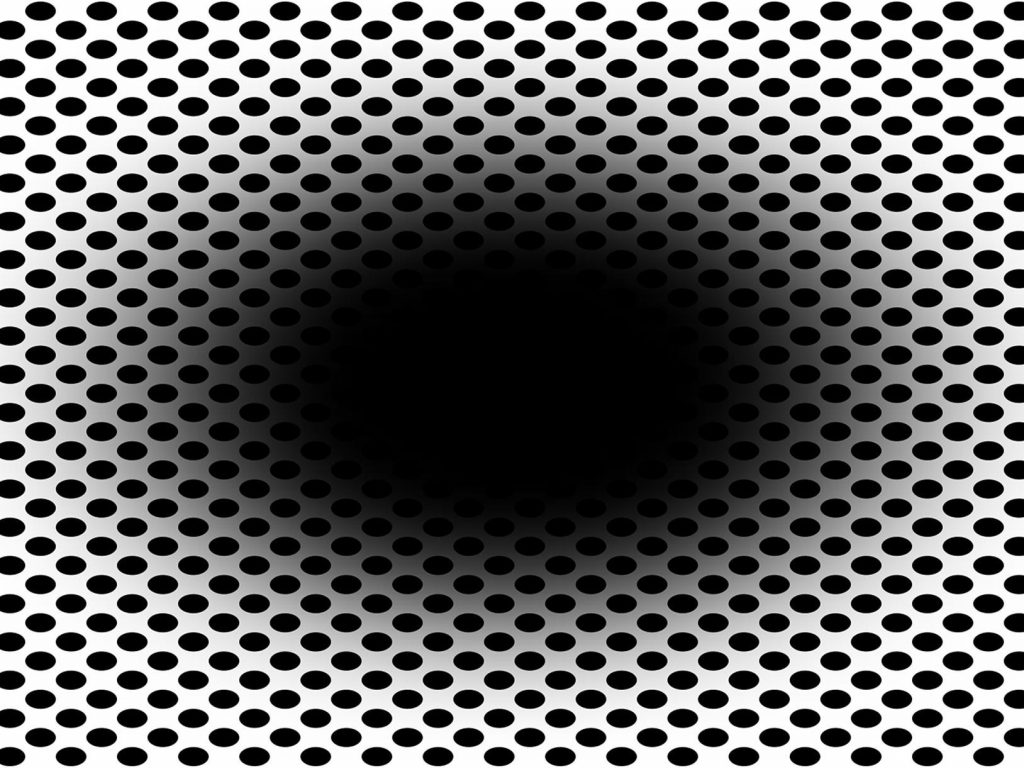- Researchers found an optical illusion triggers the pupils to dilate as if light were dimming.
- It provides clues about how the brain processes images.
- The image is by Japanese researcher Akiyoshi Kitaoka, who designed the "rotating snakes" illusion.
Do you see the dark spot in the image above moving and expanding? It's probably because it tricked your brain into dilating your pupils.
Researchers from the University of Oslo in Norway and Ritsumeikan University in Japan developed this optical illusion to test how the brain perceives images in real-time.
In a small study of 50 men and women, they found that the pupils of most participants were dilating as they were staring at the image.
The findings were published in the peer-reviewed journal Frontiers in Human Neuroscience on May 30.
They add to a growing body of evidence showing how the brain is always trying to contextualize the information it gets from the eyes, The New York Times reported.
Pupils usually dilate in a dark environment to help the eye take in more light.
But with this illusion, there is "no reason" for the eye to change shape, "because nothing is changing in the world," said Bruno Laeng, an author of the study and psychology professor at the University of Oslo, told The Times.
"But something clearly has changed inside the mind."
Laeng told The Times that the brain doesn't have a way to assess how much light was around when the eye picked up the image. So it is constantly taking cues from the environment to interpret what it is seeing.
One example of this phenomenon was The Dress meme from 2015, which split social media users into two factions: those who saw it as gold and white and those who saw it as black and blue.
Scientists think in this case the illusion makes the brain think it is entering a dark hole or tunnel, per the Times.
If you can't see the optical illusion at play, you are not alone: seven of the 50 of the study participants could not see it either.
The image is the latest in a series of striking optical illusions developed by Akiyoshi Kitaoka, a Japanese professor of psychology and an author on the paper.
Kitaoka is notably known for coming up with the "rotating snakes" illusion, colored dots in concentric circles that appear to move around like snakes. A list of his illusion can be seen on his website here.
